AppleInsider · Kasper's Automated Slave
About
- Username
- AppleInsider
- Joined
- Visits
- 52
- Last Active
- Roles
- administrator
- Points
- 10,953
- Badges
- 1
- Posts
- 66,634
Reactions
-
Fears over tariff price rises prompted panic buying of iPhones
Prior to the earnings conference call, Tim Cook said that Apple saw users buying devices such as the iPhone outside of normal expectations because of concerns that tariffs would force prices to rise.

Tim Cook and Donald Trump in a meeting at the White House in 2018
During Apple's previous earnings call in May 2025, Tim Cook said that there had been some iPhone panic buying ahead of Trump's "reciprocal" tariffs, but that it had not been significant. Now as the company announces its results for the first quarter when the tariffs were in place, the situation has changed.
"On the buying ahead relative to worrying about prices and so forth on tariffs, we did see some evidence of that in the early part of the quarter," Cook told CNBC. "We would estimate it to be about one point of the 10 points of company growth."
He previously said that the tariff impact on Apple during March had been limited because of how the company reorganized its supply and delivery chains. But he noted that at that point, Apple was estimating that tariff cost increases would "add $900 million to our costs."
The wide-ranging, and ever-changing, tariffs are needless, and damaging despite Trump's claims that they are tiny, and that anyway other countries pay them. They do not, it is US companies that pay, and therefore US consumers too, but Apple had been predicted to minimize the impact on buyers for this quarter.
For subsequent quarters, Tim Cook has previously refused to issue guidance because there have been simply too many unknown factors. However, with the new iPhone 17 range launching in September, Apple may have to raise prices.Mitigating against tariff costs
Cook did also qualify that the "bulk of the tariffs that we paid were the IEEPA tariffs that hit early in the year related to China." IEEPA is the term for Trump's "reciprocal" tariffs, and they vary from country to country, but the highest fees are applied to imports from China.
Apple has minimized this tariff impact by altering how products are distributed. Cook said that the majority of iPhones sold in the US are made in India.
"And the vast majority of other products -- the Mac, and the iPad, and the Apple Watch -- [sold in the US] have a country of origin of Vietnam," he continued. "Still, the products for other international countries, the vast majority of them are coming from China."
Despite the reorganization to source US devices from countries with the lowest tariffs, the situation is not stable. Most recently Trump was reported to be imposing a 25% tariff on goods imported from India -- which means Apple paying eight times as much in import fees as before.
Read on AppleInsider
-
Doom and gloom reporting on Apple Intelligence continues to ignore Apple's playbook
Chances are you've been underwhelmed by Apple Intelligence, but a combination of unrealistic expectations, fictional narratives, and ignored progress won't stop it from being a key part of Apple's ecosystem.
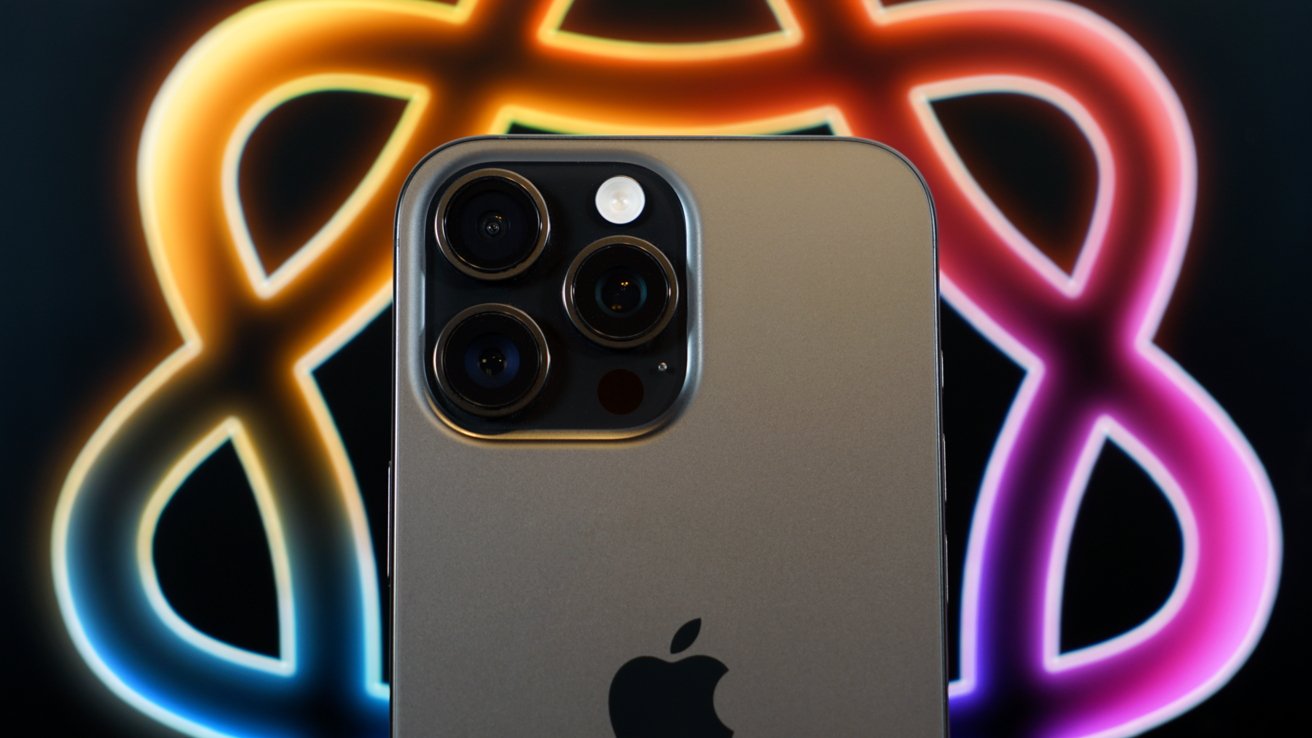
Apple Intelligence isn't chasing the same AI grift as other companies
The world viewed WWDC 2024 with middling expectations for Apple's late entry into the artificial intelligence race. The slow rollout and limited functions caused an expected yawn from analysts that were used to the grift and glamour promised by other tech companies, and that should be expected by now.
The protracted exhale of doom and gloom reporting continues with a ranging history and speculation on Apple's AI initiatives from The Information. Much of the information has been previously covered by Bloomberg, but it did detail the history of Apple's foundation model team.
However, my focus is on the expected narrative around Apple's supposed internal confusion around AI and its strategy (or lack thereof) resulting in discontent and staff departures. As always, it's important to remember that "people familiar with the matter" are likely disgruntled employees excited to speak about their pet peeves, and the coverage will likely lean into any negative narratives that help amplify a story.
The reality is the artificial intelligence industry is large, complex, and full of momentum that results in more flux and noise than even Apple is used to dealing with. It would be impossible to ignore the allure of working on what is promised to be the future of AI, superintelligence, with a giant pay package larger than Apple's CEO.Apple's true AI problem
The issue isn't that Apple got caught off guard or has some kind of talent brain drain. It's the usual problem with Apple that the world has with the company -- its pursuit of consumer privacy and maintaining product plan secrecy.
Both of these facets are polar opposites of the AI mantra that requires being loud, declaring the end of civilization with every point update, and sucking up every ounce of data available, legal or not. That said, Apple's offerings are very different from what we've seen from other AI companies and certainly come off as underwhelming compared to seemingly sentient AI chatbots.
There's no good way to make advanced autocorrect sound interesting. Apple Intelligence launched with Writing Tools that edit, manipulate, or generate text, Image Playground with poorly made renderings of people and emoji, and notification summaries that caught a lot of flack from news publications.
On the range between Apple's worst launch, Apple Maps, and iPhone, it's closer to Apple Maps on the spectrum. However, it's not the absolute disaster being peddled by many reports on the technology.
For the most part, people outside of the tech space likely have some idea what artificial intelligence is and have no idea that Apple even has a version running on their iPhone. Apple's strategy in the space is to get out of the way and offer the technology in ways that enhance the user experience without always shouting that it is an AI feature.
The most you'll see of Apple indicating Apple Intelligence is in use is the shiny rainbow elements that show up in the UI. A lot of Apple Intelligence isn't even explained beyond a tiny symbol in a summary, if a sign of AI is shown at all.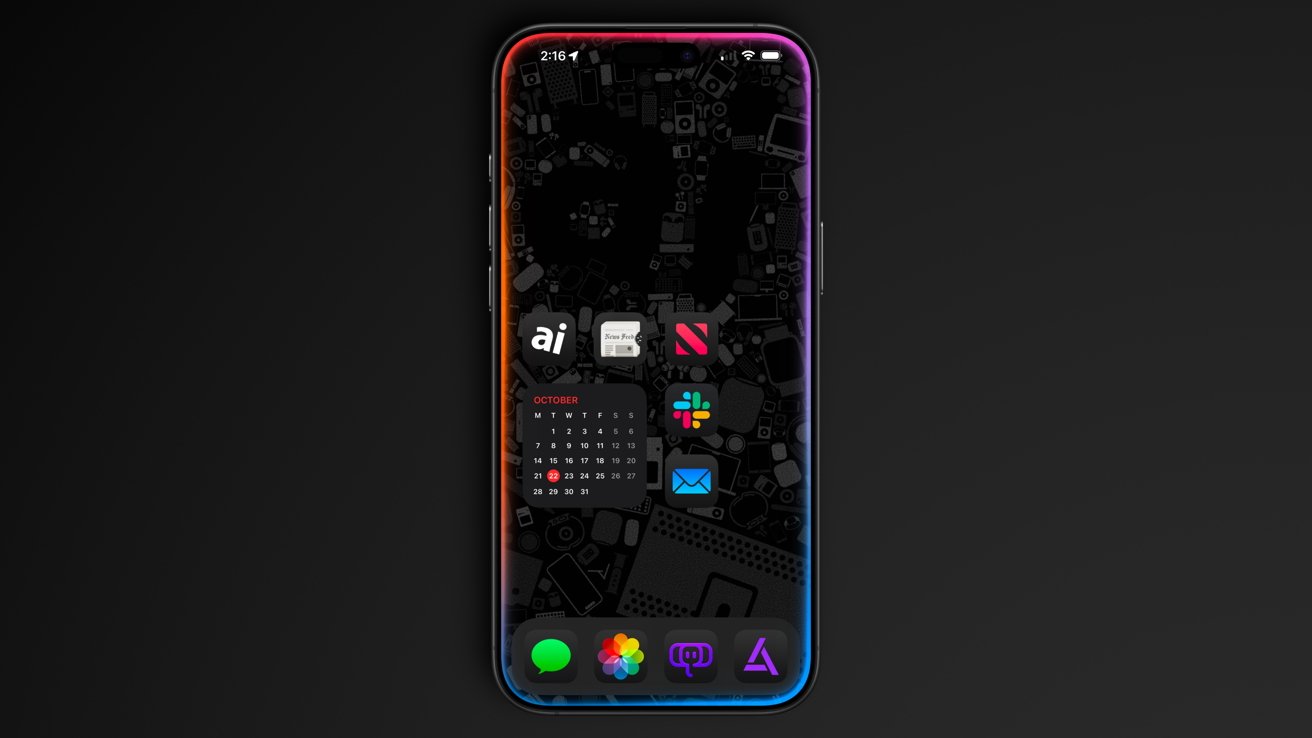
The Siri animation is the most prominent use of Apple's AI rainbow
Apple's strategy going forward, offering developers and users direct access to the foundation models, is to get further out of the way. There will be times Apple Intelligence is in use that the user will never even realize -- and that's the point.
Which is the perceived problem with Apple Intelligence. It isn't here to allegedly replace jobs or discover "new" physics, but it is here to improve workflows and help users with mundane tasks.AI reporting's red herrings
One of the biggest misses that has been repeated around Apple Intelligence since its launch is the idea of Apple being behind or caught off guard by AI. Rewind to before ChatGPT's debut, and Apple was at the forefront of machine learning and was even offering Neural Engines in all of its products before it was an industry standard.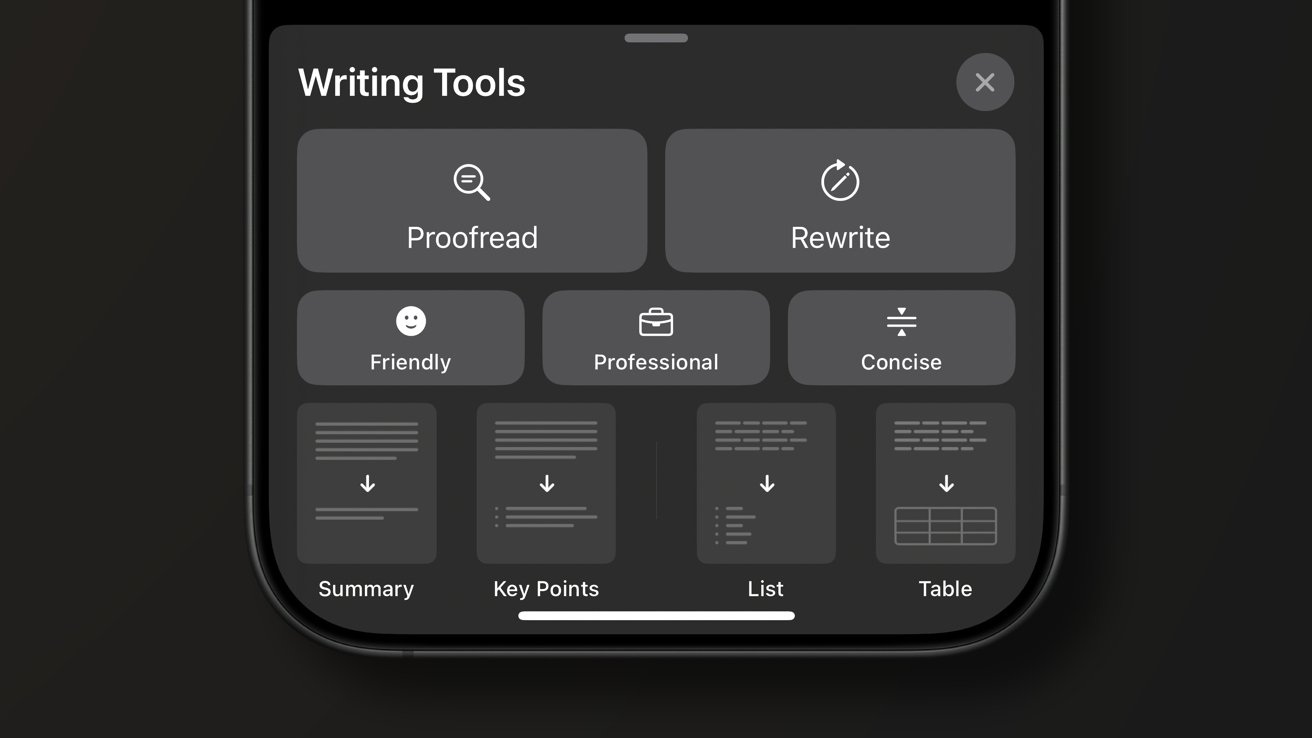
Apple Intelligence was built on Apple's strong foundation of ML
Once the industry learned that the catch-all term of "artificial intelligence" was being used everywhere, even in place of the more accurate machine learning term, demand for that term skyrocketed. Instead of misleading customers, Apple continued referring to its machine learning tools as such, and waited to call anything AI until it was using generative technologies.
The report suggests that Giannandrea was so disconnected from the idea that LLMs could be useful that he stopped Apple from pursuing them in 2022 when Ruoming Pang, the now-departed head of Apple's foundation model team, introduced them. That narrative is likely accurate, but it leaves out the fact that LLMs were largely useless in their debut state as incredibly hallucinatory chatbots.
The story around Apple Intelligence continues to suggest that Apple's executive team woke up sometime in 2023 and realized the technology was important and should be pursued. However, this very same report suggests that Apple's teams under Giannandrea had been working on various AI technologies since they were put together in 2018.
The reality is much more simple -- analysts and pundits are unhappy with how Apple has approached AI so far. They seem to have completely missed what Apple's strategy is and continue to push the idea Apple is behind instead of considering the company's own direction.
Of course, I won't ignore that there has been some reshuffling of leadership internally as Apple has adjusted how it wants to tackle AI. Craig Federighi is now overseeing Apple's AI initiatives, and the company is looking externally to bolster its efforts.
However, instead of celebrating Apple's ability to develop both its internal models while seeking to give customers options, reports suggest Apple is giving up on its own efforts. There don't appear to be any signs of that actually occurring beyond these reports from anonymous employees.Apple's true AI goals
For some reason, everyone seems completely ready to accept that Apple is just going to hire OpenAI or Anthropic to build the backend of Siri while alienating its own teams. This incredible departure from Apple's usual strategy of vertical integration has just been accepted as expected because, given the narrative around how behind Apple is, the company would have no other choice but to give up.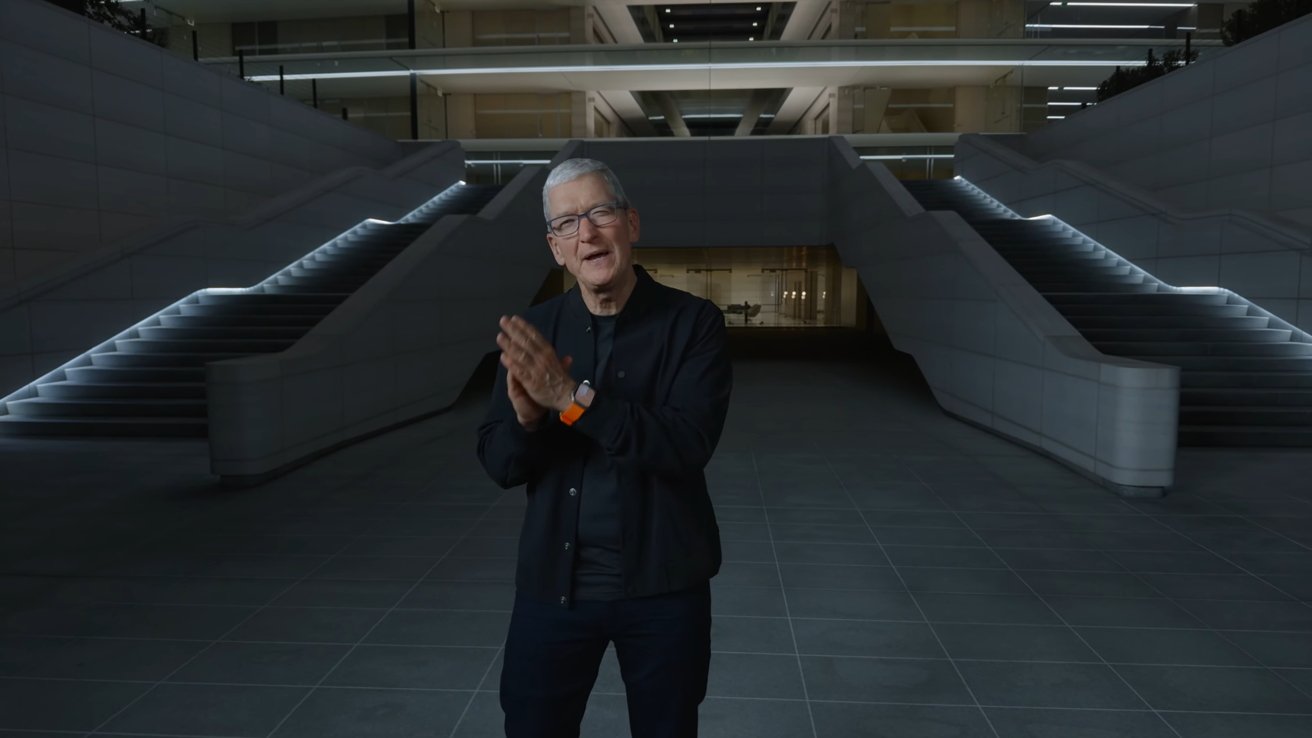
Apple CEO Tim Cook isn't sleeping on Apple Intelligence. Image source: Apple
Instead, when framed from a company that knows what it is doing and is actively evolving its strategy to play in the consistently exaggerated AI field, it's easy to see where Apple may be going with Apple Intelligence. It starts with app intents and ends with a private AI ecosystem.
Apple's executive team likely stepped in and surprised the Apple Intelligence team with its announcement of the contextual AI and Siri delay. The report reveals what I've suspected all along -- that Apple had a working version ready to ship, but the failure rate was below Apple's incredible standards.
The primary example Apple showed off with the new contextual Siri that relies on app intents is the mom at the airport scenario. Imagine if there was a 30% chance that it told you the wrong time, or even the wrong airport or wrong day.
If poorly summarized headlines made the news, wait and see what would happen if one person out of billions of users goes to the wrong airport.
Apple's pursuit of perfection with AI is likely a folly since the technology is inherently failure-prone. It can't think or reason, so unless there are some incredible checks and balances with human intervention, there likely will never be a 100% guarantee of accuracy.
Whatever system Apple devises to help overcome this limitation of AI, it'll likely debut later in 2025 or early 2026 during the iOS 26 cycle. I have no doubt that a version of that technology is coming, even as Apple further utilizes app intents in other ways across its platforms.
Apple is already brining third-party tools into the Apple Intelligence umbrella
Where the contextual, on-device, and private Apple Intelligence will be game-changing on its own, it's nothing compared to what could come next. Apple's willingness to develop its models while still giving users access to others will be its ultimate victory in the space.
I don't believe Apple is going to replace the Siri backend with Claude or ChatGPT. That reporting seems to be the result of pundit wishcasting and the desire to see Apple fail.
Instead, Apple seems to be in talks with OpenAI, Anthropic, and others to bring models of their popular AI programs to Private Cloud Compute. If that happens, it goes well beyond Siri simply shaking hands with ChatGPT over a privacy-preserving connection -- it guarantees user data will never be used by third parties.
If Apple's pitch for Private Cloud Compute is a server-side AI that runs with the same privacy and security measures as an on-device AI, then imagine those same conditions applying to ChatGPT.
The future of Apple Intelligence is a combination of contextually aware local models running on devices with access to third-party models running via Private Cloud Compute. Users would be able to choose which models suit their needs in the moment and submit data without fear of it becoming part of training data.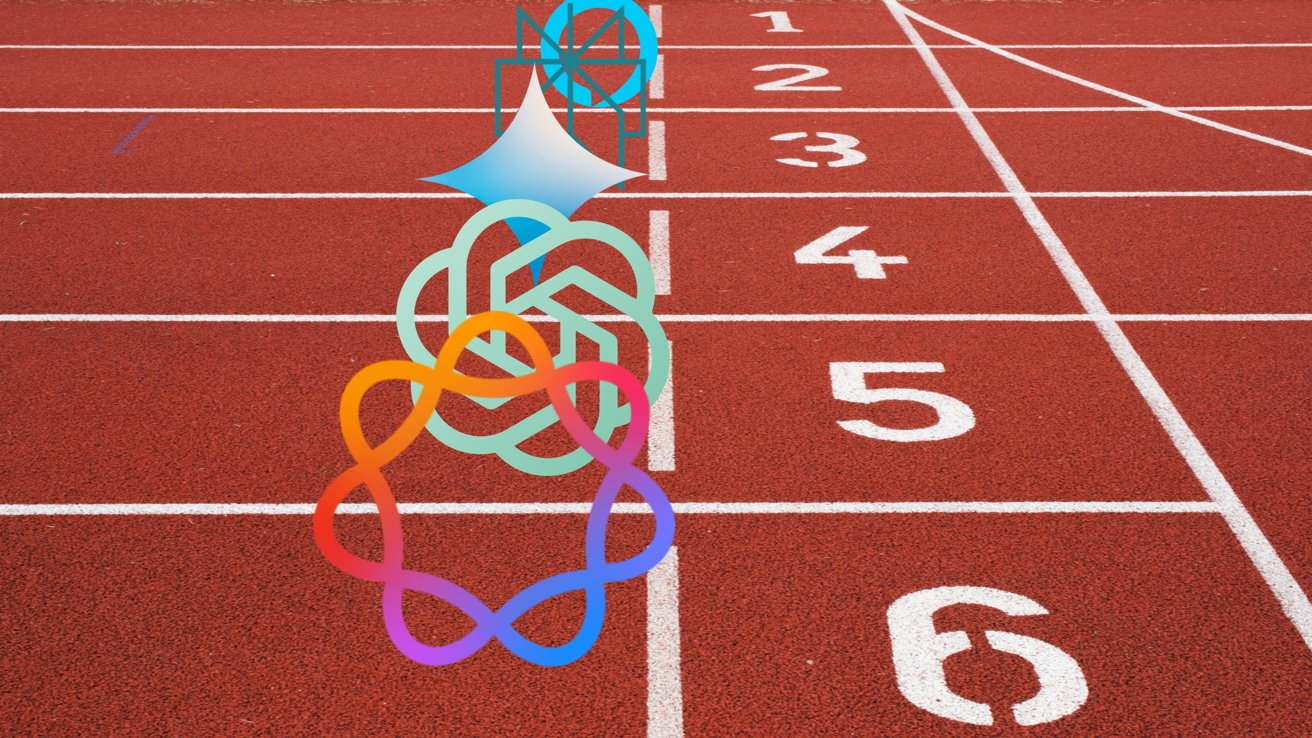
Apple could win the race by giving users choice in an AI ecosystem
The Apple Intelligence ecosystem would be the only one built from the ground up for ethical artificial intelligence. Regardless of model, on device or in Apple's servers, it would run privately, securely, and on renewable energy.
In a world filled with exaggerations around AI and its future, we should celebrate the grounded and realistic promises. Artificial intelligence is a tool, like a hammer, that can enhance human productivity, not replace it, and Apple's strategy reflects that.
Apple's tagline for Apple Intelligence is "AI for the rest of us." And by providing billions of Apple customers access to sustainable, ethical, private, and secure AI models, I'd argue Apple is pursuing a potential future that's not only realistic, but places it well ahead of the competition.
Read on AppleInsider


-
TSMC US chip production may soon only be three years behind Taiwan
TSMC is working to build two plants in Arizona faster, a move that could bring more Apple chip production to Arizona quicker -- but don't expect the newest chips.
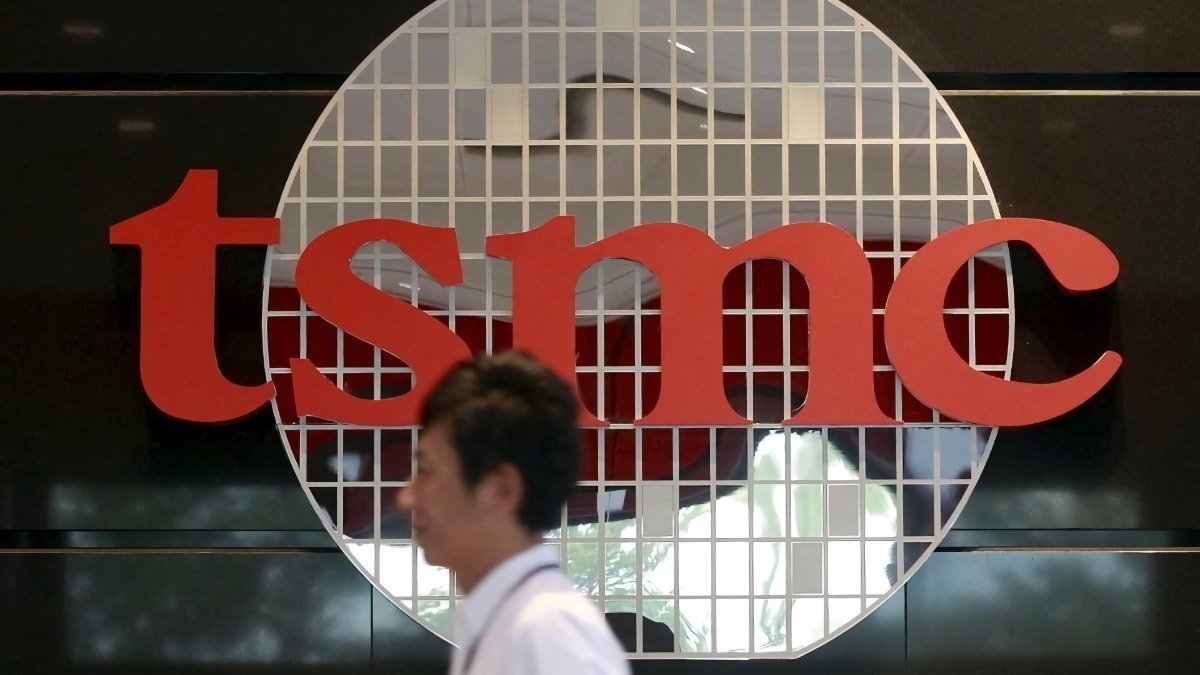
A worker passing a TSMC sign
The TSMC facility in Phoenix, known as Fab 21, is the chip foundry's first factory in Arizona dedicated to chip production. However, while two others are under construction, TSMC plans to have them up and running sooner than first thought.
According to Nikkei, TSMC intends to speed up construction of the two sites considerably. The factories will be accelerated "by several quarters," TSMC claims, with the intention of bringing them online faster.
TSMC says it is to meet the demand from U.S.-based customers for smartphone and AI computing chips.
"After completion, around 30% of our 2-nanometer and more advanced [chip] capacity will be located in Arizona," said TSMC chairman and CEO CC Wei on Thursday. It will create "an independent, leading-edge semiconductor manufacturing cluster in the U.S."Closer to Taiwan tech
The assertion by TSMC that it will be cutting "several quarters" off the construction time for its two factories is a big thing for U.S. chip production in general. Something that is severely lagging behind Taiwan.
In March, it was said that the second Arizona plant would be ready for 3-nanometer chip production by 2028, while the third plant would be used for 2-nanometer chips. That third plant, which broke ground in April 2025, was thought to be ready by 2030.
With 2-nanometer production already in progress in TSMC's Taiwan facilities, that effectively meant that TSMC's U.S. facilities were five years behind Taiwan.
By cutting down the construction schedule by a considerable amount, this could bring the overall lag for U.S. production down to as few as three years.Faster by investment
The acceleration of construction follows months after TSMC pledged a $100 billion investment in the United States. The investment, intended to take place over four years, was to be used to increase TSMC's manufacturing footprint in the country.
TSMC had already made an initial investment in Arizona to the tune of $12 billion in 2020. It has also received a $6.6 billion package from the Biden administration as part of the CHIPS act.
The latest high-value pledge will almost certainly be used in part to speed up the building of the facilities. Processes which, due to the size and complexity, take a long time to complete.The U.S. iPhone chip dream
The acceleration of construction at the facilities should be well received by the administration of President Donald Trump. He has repeatedly campaigned for more manufacturing to return to the United States, and has called out Apple to do the same.
There are roadblocks. Notably, a lack of U.S.-based resources and an educated local workforce needed for iPhone assembly to take place at all are the main hindrances.
It is highly plausible that the smartphone and AI chip demand could be from Apple, as the Cupertino company is one of TSMC's biggest chip clients. Such a move will make the construction of an iPhone entirely in the United States a little bit closer to reality.
Until that happens, Apple has no choice but to accept that its chips have to be built in TSMC's more up-to-date facilities in Taiwan. At least, for its more advanced chips.
The $100 billion won't necessarily allow the U.S. projects to catch up to Taiwan completely, but a few quarters closer is still a lot when it comes to manufacturing.
Read on AppleInsider

-
iPhone Fold could be thinner than an iPad Pro when opened
The iPhone Fold is expected to be very thin, with a Chinese leaker claiming the flexible smartphone could have a frame that's just 4.8mm thick.
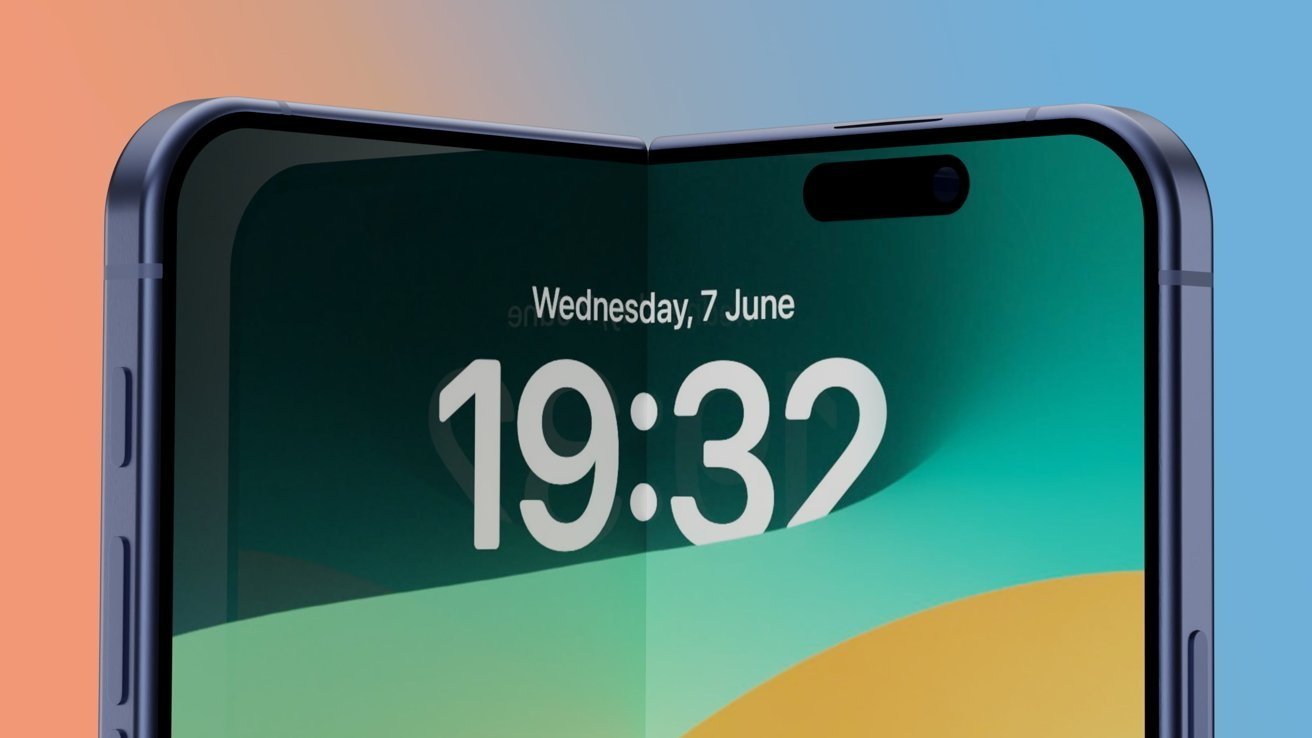
Render of a possible iPhone Fold - Source AppleInsider
The iPhone Fold is an engineering challenge for Apple, but one that it seems to be meeting. One of those challenges is making it thin, without being too thick while folded up, something a leaker believes Apple has solved.
In a Wednesday post to Weibo, serial leaker Instant Digital said that the frame for the folding iPhone is measured at 4.8mm. For comparison, the iPhone 16 is 7.8mm thick, while the M4 iPad Pro is 5.1mm thick.
While this would theoretically mean the iPhone Fold could be as slim as 9.6mm thick when folded up, Instant Digital warns against this. They say that the actual thickness of the "inner screen frame pad" but also be taken into account, but they don't say how much that would be.In the right ballpark
While 4.8mm sounds like an extremely thin smartphone when unfolded, this is actually a measurement that has cropped up in the past. Analyst Ming-Chi Kuo issued various specifications in March, including that the unfolded iPhone Fold would measure between 4.5mm and 4.8mm.
Kuo also added that the folded thickness for the device would be between 9mm and 9.5mm, which isn't much thicker than a current-gen iPhone.
Instant Digital doesn't have the best reputation, in part due to the generally poor accuracy of Weibo-based leaker accounts. Instant Digital did manage to be correct about the camera control button on the iPhone 16, but they have also claimed that an all-glass Apple Watch is on the way.
Aside from the thickness, there's also some agreement between leakers in terms of the overall screen size.
In June, Weibo leaker Digital Chat Station said the screen size was 7.58 inches, smaller than their April 2025 claim of 7.76 inches and their March 2025 claim of 7.74 inches.
Kuo, meanwhile, went for 7.8 inches in March 2025.
Resolution-wise, the rumors are more consistent, with expectations of the internal display reaching 2,713 pixels by 1,920 pixels.
On the back, there are expectations of a dual camera system, though Digital Chat Station said in June that Apple will use 48MP sensors.
Rumor Score: Possible
Read on AppleInsider
-
Developer angry that App Store is removing game that hasn't been updated in 7 years
A game developer has accused Apple of undermining the cultural value of games by threatening to pull an app that hasn't seen a single update for seven years from the App Store.
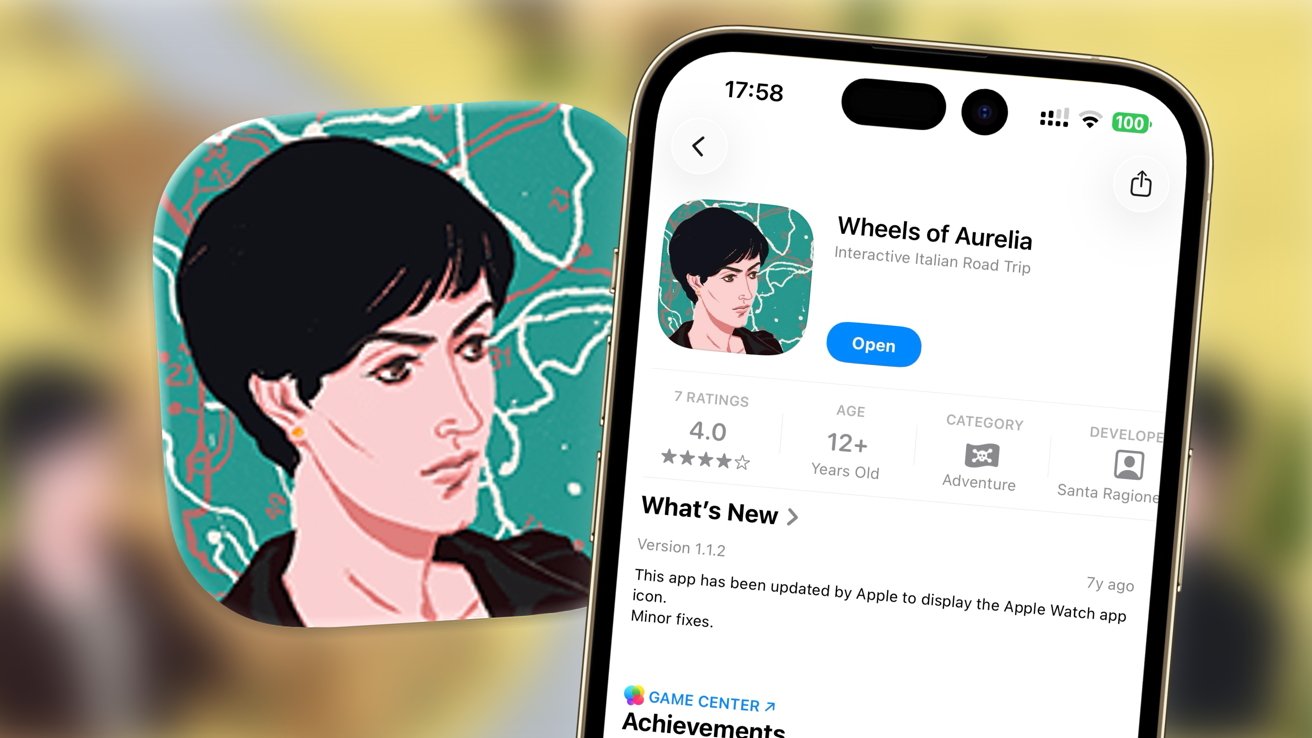
Wheels of Aurelia is facing removal from the App Store
Apple is repeatedly under fire for its App Store policies, but occasionally the complaints against it are questionable. One developer in Italy is declaring that Apple's warning it will delist a game from the App Store is an affront to culture itself.
Santa Ragione, a developer of Horses and Saturnalia, was told that its game Wheels of Aurelia will be removed from the App Store on July 25, 2025. Speaking to Game Developer, the studio took the news extremely poorly.
Apple warned the studio that the game would be delisted, but the studio insists that the reasoning for the removal was unclear. After appealing twice, studio co-founder and director Pietro Righi Riva was then called by a member of Apple's team, who told the developer to file another appeal.
Despite the repeated appeals, Apple is still seeking to remove the game from the App Store.A "lack" of justification
In its response to the warnings, Riva insists that Apple has been unclear as to why the app will be taken down. Or at least, not clear enough in a way that suits the company's needs.
He says Apple "has not provided clear justification for this removal." Granted, Apple does have a history of not being great with developer communications, but this time it seems more clear-cut.
This is especially true when that sentence continues to say that Apple cited "only" its policy for removing apps deemed "obsolete" or "outdated." This shouldn't apply to the game in question because it is still fully functional and compliant with current standards, Riva claims.
Riva then goes on to insist that Apple's move is anti-art and anti-culture.
"We firmly believe that removing fully functional artistic works simply due to infrequent updates undermines the value and sustainability of games as cultural and artistic products," he declares. Just like books and films, games represent creative works that "do not inherently require continual updates beyond maintaining basic functionality."
Updating Wheels of Aurelia would demand "very significant resources" to update the engine and other elements. All without making any "meaningful enhancements" to either the user experience or artistic value.
Forced updates represent a "substantial financial burden" that draws resources from other new projects, he adds.
Removing the apps also impacts the visibility of developers, Riva continues, affecting their recognition in a "very competitive industry." Apple's approach puts smaller developers at risk due to needing to continuously update their projects to meet changing demands.
Riva also jabs at Apple's apparent gatekeeping, saying its "dominant position" makes such practices "especially troubling." He then commends EU regulations like the Digital Markets Act designed to make a fairer market and prevent monopolistic behaviors.
"This obsoletion [sic] policy further reinforces a vision that does not recognize games as an art form," Riva concludes. "It is a view that, unfortunately, is becoming increasingly common across the industry."
Ahead of the scheduled pulling of the game, it has been made available as a free download in the App Store.Clearing the digital storefront
Apple has quite a few policies in place that impact how an app is added to the App Store, and how it must act while included within it. What is less talked about are policies that can see an app removed from the App Store.
There are the more obvious rules, such as content, which can get an app kicked out. But there are also rules that titles such as Wheels of Aurelia have fallen afoul of.
In this instance, the policies stem from "App Store Improvements" that Apple first introduced nine years ago, in September 2016. For apps that no longer functioned as intended or followed current review guidelines, Apple said they would evaluate the apps for issues, notify the developers of them, and potentially remove abandoned apps from the App Store.
This also included apps that "have not been supported with compatibility updates for a long time," in Apple's own words. "Compatibility updates" include device resolution adds, of which there have been three since the last time the game was updated.
By 2022, Apple clarified the criteria surrounding the process. This included justifications for maintaining security and compatibility with current hardware, but also for underperforming apps.
The last update in the App Store for Wheels of Aurelia was over seven years ago
Apple warned that developers of apps that had not been updated within the last three years and had failed to meet a "minimal download threshold" would receive an email warning about potential removal.
That threshold is further clarified to mean an app that had not been downloaded at all or "extremely few times" during a rolling 12-month period.
Developers were also given more time to update their apps, up to 90 days, to comply with the rules. The timeline continues to be adhered to by the current App Store Improvements policy.
When it comes to determining whether Wheels of Aurelia has fallen afoul of the rules, we can check at least one of the variables.
The game was released in 2016, but it's only had a few version updates since then. The last one was to version 1.1.2, on December 6, 2017.
By the time of the 2022 clarification of the policy applying to apps without updates for three years, the game hadn't been updated for over four years. At the time of publication, that's now stretched to seven years without an update.Timeliness is a virtue
Riva's arguments for updates have a point, and it can be summed up by the adage "If it ain't broke, don't fix it." Taking that approach can certainly apply in many areas, but app development isn't one of them.
Software security continues to be an important factor of modern-day computing, and making sure your software isn't contributing to the problem is just good policy.
Ensuring the apps continue to work properly on newer models of iPhone is also a very consumer-first approach. The iPhone 7 family of devices was released at that time, and there have been many releases -- with different screen resolutions -- since then.
Wheels of Aurelia - Image Credit: Santa Ragione
Updates ideally could be made to take into account some of the changes, such as the aforementioned resolution or other internal specifications. Occasional compatibility updates would keep the app fresh in users eyes too, even if there were no material changes made to it.
There was enough justification in performing even one minor change to the app and updating it in the App Store, just to reset that three-year clock.
This would certainly pull a small amount of resources away from other projects as the developer says. But at least the game would be kept alive and in the store.
There is the counterargument that no one wants to resubmit a game update to the App Store Review process without justification, especially if it's in an already usable state.
Periodically doing so will at least ensure that the app will work for a few more years without any more tweaks needed.It's Apple's store
Apple's policies to remove titles from the App Store due to age and unpopularity are well within its rights as a retailer. It doesn't have to list your products, but it tends to do so since it will make some money off it in most cases.
At the same time, it has to ensure that its consumers are kept safe, but also offered products that are both current and popular.
A game that hasn't received updates in multiple years is not what you can consider "current," even if it functions fine.
Likewise, with Apple having to deal with hundreds and thousands of new apps and app updates every day, there is a lot of apps trying to become the most popular.
Apple's removal of old and unpopular apps also means there are fewer items on its infinite shelf space for consumers to choose from. It helps nudge consumers toward apps that others use and that they may also want to purchase, instead of old apps no-one else really uses anymore.
There is no value to Apple recommending an app that no one else has downloaded for months, since the market has already demonstrated the app no longer has a perceived value to the App Store. Removing it is a better option for Apple than keeping it around and wasting consumer attention, with a high likelihood of it not being bought anyway.
The argument that this is Apple denying the artistic value of a game is also not really applicable here. This is a policy based on schedule and hard data, not opinion.
While you may think an app or a game is considered art and should be included in the App Store, Apple doesn't have to abide by that. It's playing by literally different rules.One door closes, others stay open
Apple's pulling of an app from an App Store because no one's downloaded it in ages doesn't stop you from being able to acquire the game elsewhere.
It is still available on modern consoles, including the Nintendo Switch, Xbox, and PlayStation storefronts. It's also on the Epic Games Store and Steam for macOS, and even Google Play if you have an Android device.
While it won't necessarily be available from the App Store once the deadline passes, you can still get the game from many other venues. If you already have it for iOS, you'll also still be able to play it after its removal.
The best defense against the removal is actually something that Santa Ragione should've done. It had literally years to update the game, and it chose not to do it.
At this point, Apple has seemingly been very generous in allowing the game to exist in the App Store until now.
It has led the proverbial horse to the trough, filled it with clean and cool water, and even offered a sugar lump. Santa Ragione loudly complains that it is extremely thirsty, but won't take a sip.
We have reached out to Apple for comment. We are not expecting an answer.
Read on AppleInsider


